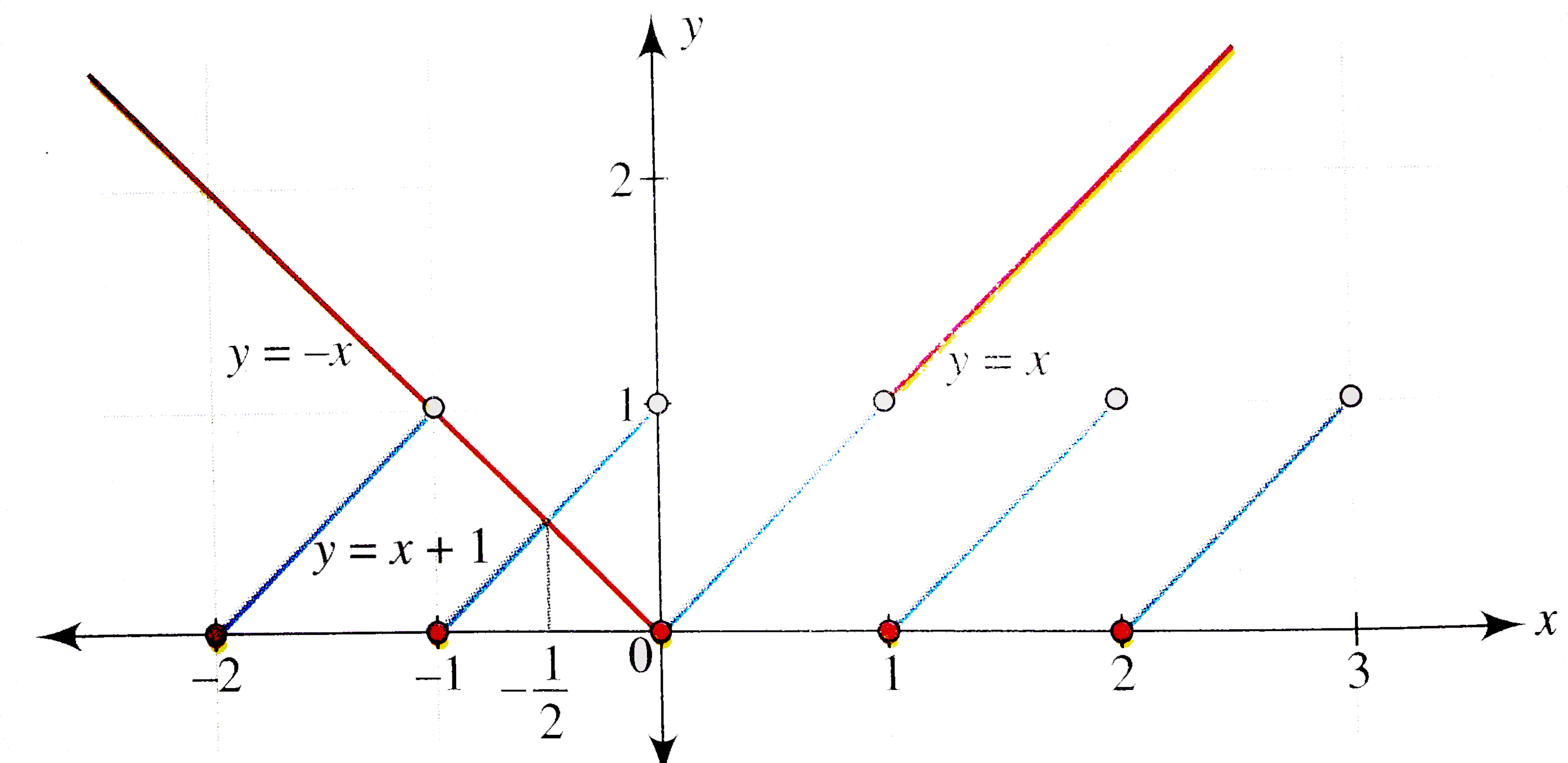Find the domain of (where denots the fractional part of x). Solution in Tamil
We have
is defined if .
To find the solution to the above inequality, we draw the graphs of .

From the graph, the required values of x are , where the graph of either lies above the graph of or coincides.
Topper's Solved these Questions
- GRAPHS OF ELEMENTARY FUNCTIONS BOOK - CENGAGECHAPTER - GRAPHS OF ELEMENTARY FUNCTIONS EXERCISE - Exercise
34 Videos
- GRAPHS OF POLYNOMIAL AND RATIONAL FUNCTIONSBOOK - CENGAGECHAPTER - GRAPHS OF POLYNOMIAL AND RATIONAL FUNCTIONSEXERCISE - Exercises
4 Videos
- GRAPHS OF TRIGONOMETRIC FUNCTIONSBOOK - CENGAGECHAPTER - GRAPHS OF TRIGONOMETRIC FUNCTIONSEXERCISE - Exercise
22 Videos
Similar Questions
Draw the graph of y=1(1/x).
View SolutionSketch the graph of an example of a rational function f that satisfies all the given conditions.
(i) f(0)=0,f(1),limx→∞f(x)=0,f is odd
(ii) limx→0+f(x)=∞,limx→0−f(x)=−∞,limx→∞f(x)=1,limx→−∞f(x)=1
(iii) limx→−2f(x)=∞,limx→−∞f(x)=3,limx→∞f(x)=3,f(0)=0
View SolutionDraw the graph of y= cosec 2x−cot2x. Is f(x) periodic ? If yes, what is its fundamental period ?
View SolutionThe domain of f(x)=sqrt(cos(sin x))+sqrt(log_(x){x}) where {x} denotes fractional part of x .
View SolutionThe domain of f(x)=sqrt(2{x}^(2)-3{x}+1) where {.} denotes the fractional part in [-1,1]
View SolutionThe domain of f(x)=(1)/(sqrt(-x^(2)+{x})) (where {.} denotes fractional part of x) is
View SolutionThe number of integral values of x in the domain of f(x)=sqrt(3-x)+sqrt(x-1)+log{x}, where {} denotes the fractional part of x, is
View SolutionDomain of f(x)=(1)/(sqrt({x+1}-x^(2)+2x)) where {} denotes fractional part of x.
View SolutionLet f(x)=sqrt(|x|-{x}), where {.} denotes the fractional part of x an X ,Y and its domain and range respectively,then
View SolutionThe domain of f(x)=sqrt(x-2{x}). (where {} denotes fractional part of x ) is
View SolutionFind the domain of f(x)=√|x|−{x} (where {⋅} denots the fractional part of x).
View SolutionLet f(x)=[x]+√{x}, where [.] denotes the integral part of x and {x} denotes the fractional part of x. Then f−1(x) is
View SolutionThe domain of function f(x)=ln(ln((x)/({x}))) is (where f ) denotes the fractional part function
View SolutionThe domain of the function f(x)=1√{x}−ln(x−2{x}) is (where {.} denotes the fractional part function)
View SolutionFind the domain of f(x)=√|x|−{x} (where {⋅} denots the fractional part of x.
View SolutionThe domain of f(x)=√2{x}2−3{x}+1, where [.] denotes the fractional part in [-1, 1] is
View Solution
